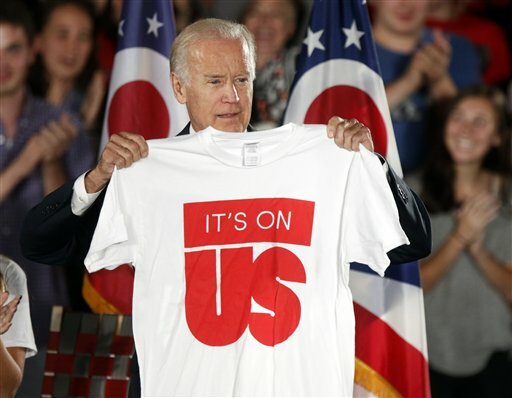Earlier today, the Association of American Universities (AAU), of which Cornell is a founding member, released the results of a campus sexual assault climate survey in which Cornell and 26 other universities participated.
For the bulk of the questions, Wash.
“That is lower than we had hoped, and lower than the number of other campus climate surveys over last few years”, said David Cantor, vice president of Westat, the survey company hired to help design and execute the survey.
“The training helps prepare students for issues they may face, including caring for their own health and safety, sexual assault prevention and harassment”. At 24.1 percent, the rate of victimization for undergraduate students who identify as transgender, genderqueer, questioning, or nonconforming is statistically the same as the rate for undergraduate females.
It’s considered a landmark report in that it found that one in five undergraduate women are victims of attempted or completed sexual assault during their college years.
“Sexual assault, sexual misconduct and sexual harassment are serious problems on college campuses across the country and in society in general”, said Iowa State University President Steven Leath.
The rate of sexual assault and misconduct found in the AAU’s report is as high or slightly higher than the rates found in prior surveys.
Two types of victimization were in the survey: sexual assault and sexual misconduct.
Because the bulk of assaults occur at social events, Kennedy said that an expansion of the Green Dot bystander intervention program would be paramount to helping reduce the prevalence of assaults on campus.
“Sexual assault concerns me deeply, not just as the leader of this university, but as the mother of a college sophomore”, Chancellor Rebecca Blank said in a prepared statement before a 10:30 a.m. news conference on campus. “This survey is another positive step in our efforts to create a safer campus for all of our students”. For undergraduate men, the percentage was 5 percent. This is compared to an average 45 percent of students from all universities surveyed, representing one of the largest gaps. Under the broader definition of “nonconsensual” involving coercion and absence of affirmative consent, 53.3 percent of TGQN undergraduates have experienced nonconsensual sexual contact during their college careers.
Overall, 28% of female undergraduates reported they were victimized by any of the four tactics. But researchers did not find a clear explanation for the disparity in campus results. “They really do give us a nice breakdown where we can look at them and say, OK, we focused here, now this is where we need to expend more of our energy in terms of sharing process, sharing resources, letting folks know what’s out there, and helping to build their confidence in the ability and the willingness of the University to address these issues”. And, 74.9 percent said it was very or extremely likely that university officials would take such reports seriously.
Those who chose to report the incidents, however, said they had generally favorable experiences.
The administration needs to do more to inform students about the reporting and investigation process, Kennedy added.
The detailed campus data combined with follow up discussions among specific segments of the campus community will provide an opportunity to engage students, faculty, staff and campus governance groups, Van Orman said.
But Kennedy also pointed to the significant increase in cases being reported to campus authorities as evidence of growing student trust in those processes.
Freshman women appeared to be at greater risk than older students for the most serious sexual assaults – those involving penetration.
Similarly, no more than a third of students who experienced an incident themselves said they reported their experience to a university agency or another organization, such as the police.
The association has provided the survey findings for participating schools to use in developing effective policies.
